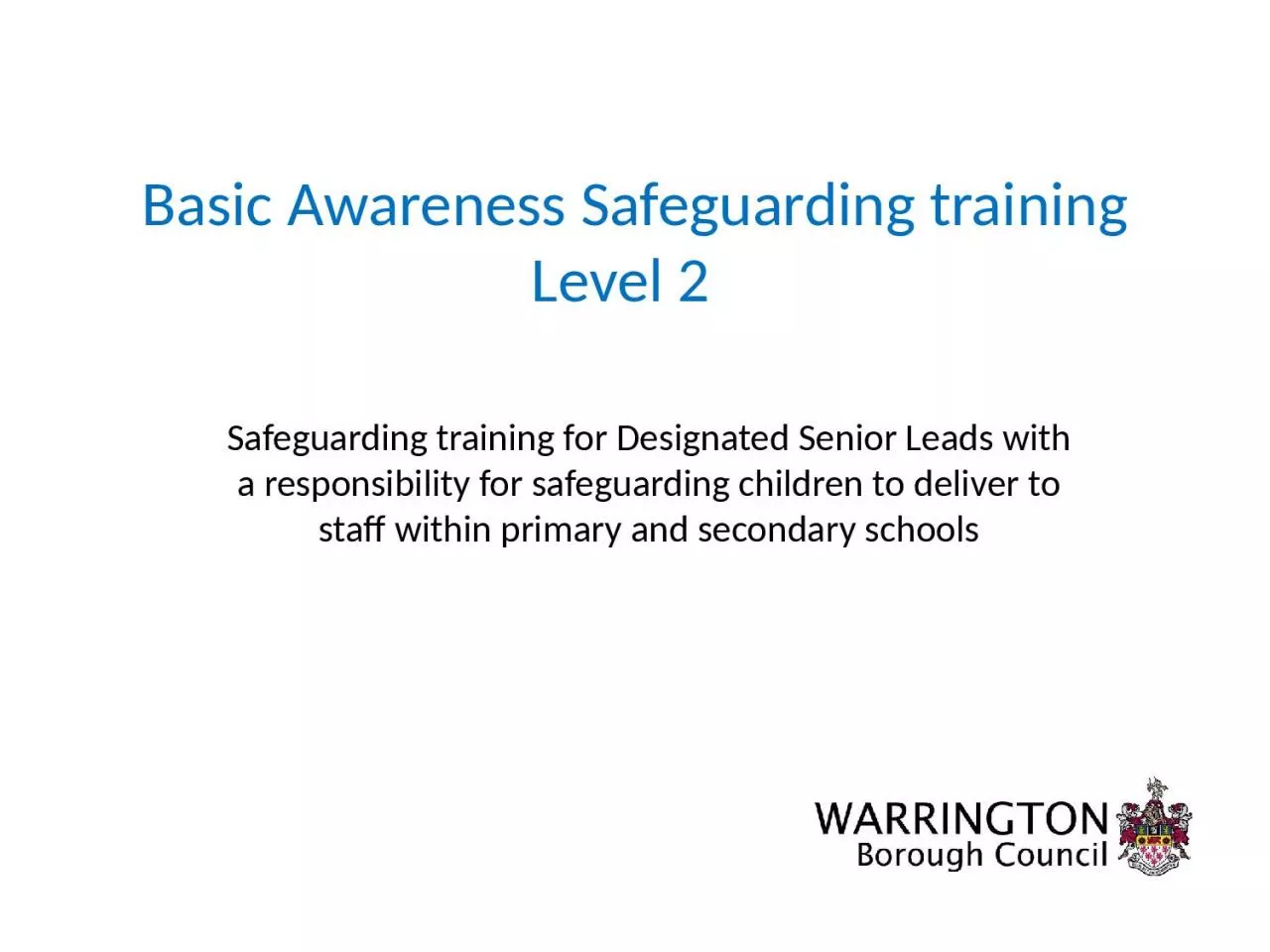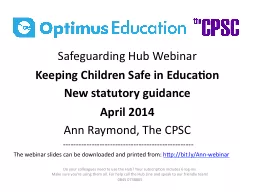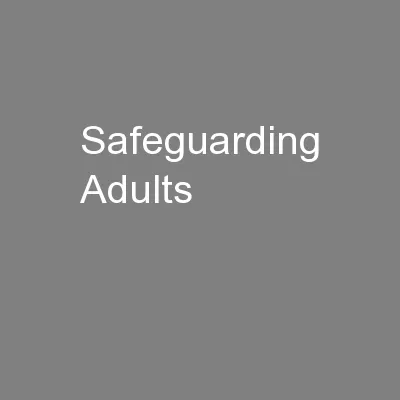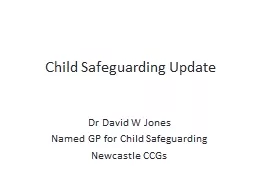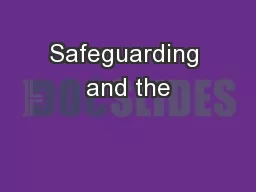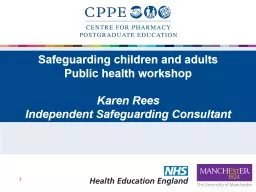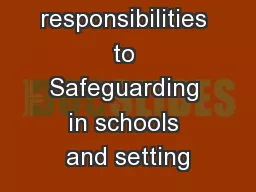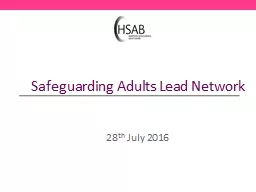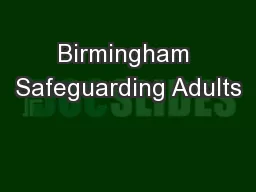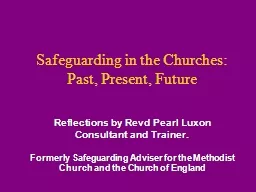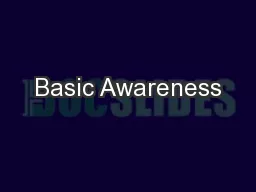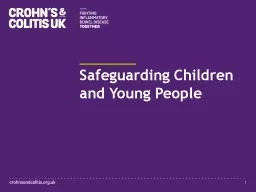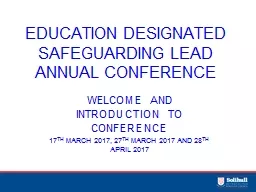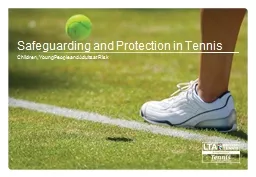PPT-Basic Awareness Safeguarding training Level 2
Author : elina | Published Date : 2022-06-14
Safeguarding training for Designated Senior Leads with a responsibility for safeguarding children to deliver to staff within primary and secondary schools Aims
Presentation Embed Code
Download Presentation
Download Presentation The PPT/PDF document "Basic Awareness Safeguarding training Le..." is the property of its rightful owner. Permission is granted to download and print the materials on this website for personal, non-commercial use only, and to display it on your personal computer provided you do not modify the materials and that you retain all copyright notices contained in the materials. By downloading content from our website, you accept the terms of this agreement.
Basic Awareness Safeguarding training Level 2: Transcript
Safeguarding training for Designated Senior Leads with a responsibility for safeguarding children to deliver to staff within primary and secondary schools Aims To develop awareness of and the ability to act on concerns about the safety and welfare of children and young . WE ARE learning from our . Serious Case Review. Conference January 2014 . Current context. Deficit reduction and welfare benefit changes. Changes for partner agencies: Health, Police, VCS, schools and academies. Keeping Children Safe in Education. New statutory guidance. April 2014. Ann Raymond, The CPSC. --------------------------------------------------. The webinar slides can be downloaded and printed from:. Safeguarding Adults. AKA Protection of Vulnerable Adults, POVA, Elder Abuse. But Safeguarding is not just about responding to concerns. Universal, targeted and responsive . Safeguarding for all adults. Dr David W Jones. Named GP for Child Safeguarding. Newcastle CCGs. Note of Caution. This subject may raise painful memories or associations. This is not a safe time to share personal memories. If required, seek advice from a professional outside of this meeting, or contact the NSPCC helpline 0808 800 5000. Care Act. . ADASS Spring Seminar. 16th April. . 2015. Dr . Adi. Cooper . & Mimi Kon. igsberg. Key Principles of the Care Act. the person knows best. person’s views, wishes feelings and beliefs should always be considered. Public health workshop. Karen Rees. Independent Safeguarding Consultant. 1. Aim. The aim of today’s workshop is to develop your confidence, knowledge and skills to be able to deal professionally with a safeguarding issue should one arise in the course of your practice. . Safeguarding Children. Vulnerable Adults. . Safe Children. Safe Premises & Places. . Safe People. . Policies. Procedures. Practices. Culture of vigilance. Overarching understanding of portfolio holders - As HT holding them to account. L. ead Network. 28. th. July 2016 . Workshop Outline. Care Act 2014 – key messages. Local multi-agency safeguarding adults arrangements . Local developments . Safeguarding . Adult Lead . Role. Tools and guidance available . Board. Partnership Event: . Adult Safeguarding under the Care Act, and its interface . with . Domestic Abuse. Tuesday . 10th November, 2015. 9.00- 1.30pm . VENUE:. Tally Ho-Lord Knight Suite. Pershore Road, Edgbaston . Past, Present, Future. Reflections by Revd Pearl Luxon. Consultant and Trainer.. Formerly Safeguarding Adviser for the Methodist Church and the Church of England. The Church of England. Safeguarding Adviser (child and adult protection). to Safeguarding Children – Everybody’s Business. Ground Rules. Mobile phones and I Pads turned off. Confidentiality. Participate to ensure maximum benefit from the training. Keep an open mind and challenge constructively. 2. Everyone has a responsibility to keep children and young people . safe.. All organisations that come into contact with children should have specific safeguarding policies and procedures in place. This includes voluntary and community organisations, faith groups, private sector providers, as well as schools, hospitals and sports . WELCOME AND INTRODUCTION TO CONFERENCE. 17. TH. MARCH 2017, 27. TH. MARCH 2017 AND 28. TH. APRIL 2017. Education Designated Safeguarding Lead Conference. Know about national and local updates and relevant learning; and understand the requirements of KCSIE(2016). Children, Young People and Adults at Risk. Housekeeping. Learning Agreement. We as a group, including the facilitator agree:. to listen without interruption and be listened to. to respect the feelings, experiences and perspectives of others.
Download Document
Here is the link to download the presentation.
"Basic Awareness Safeguarding training Level 2"The content belongs to its owner. You may download and print it for personal use, without modification, and keep all copyright notices. By downloading, you agree to these terms.
Related Documents

